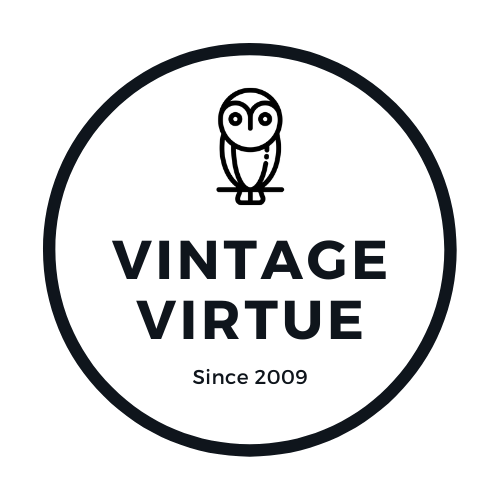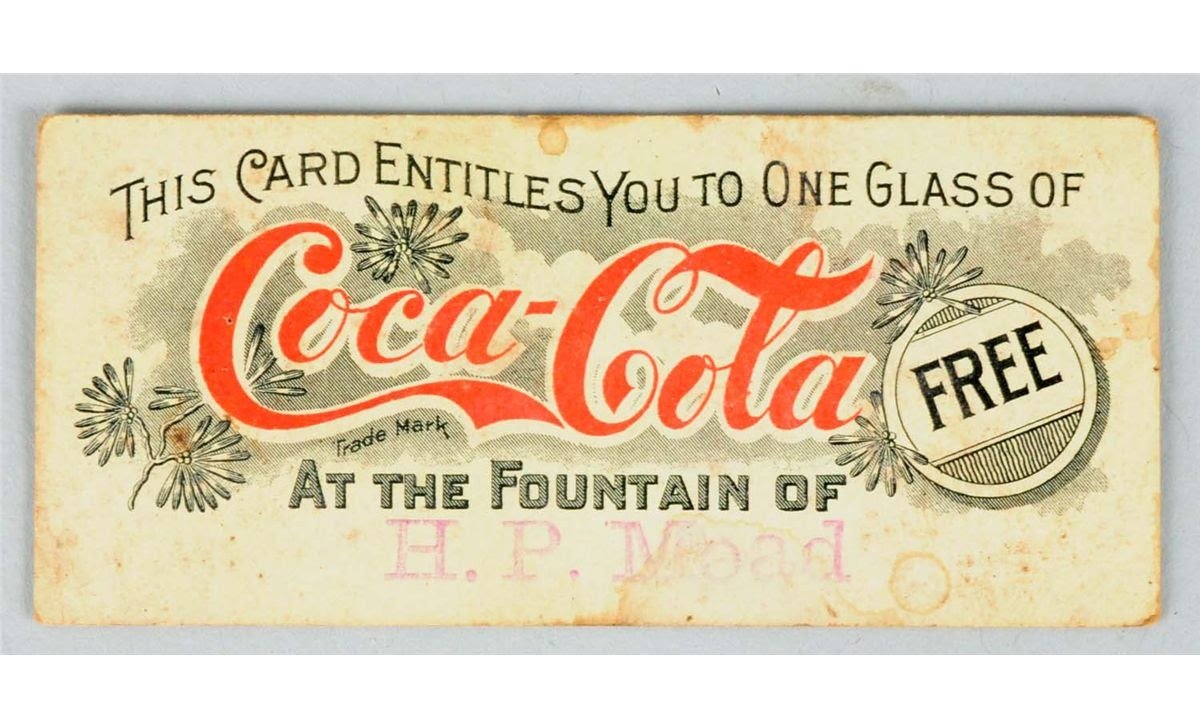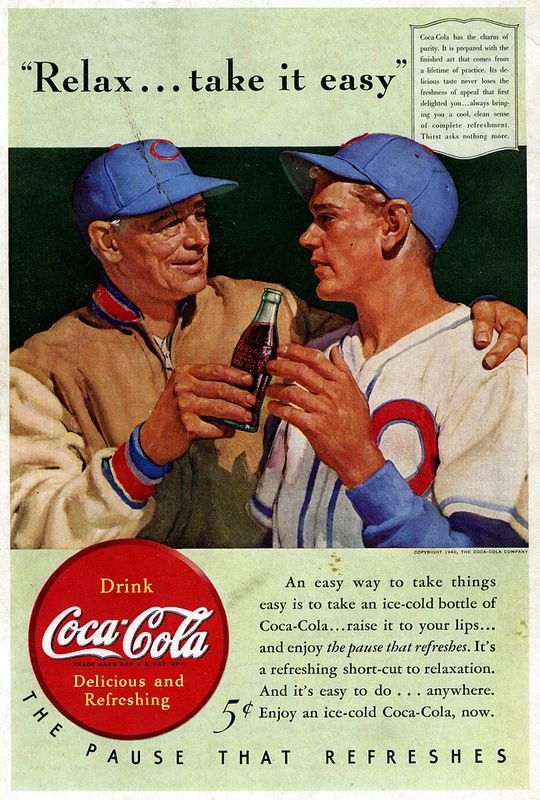A Beginner's Guide To Collecting Coca-Cola
Collecting Coca-Cola memorabilia can be a fun and rewarding hobby. Coca-Cola is one of the world's most recognizable and beloved brands and has been around for over a century. As a result, there is a vast array of items associated with the brand that collectors can seek out and add to their collections.
When collecting Coca-Cola memorabilia, it's important to know the potential for fraud or counterfeit items, particularly vintage or rare pieces. Collectors should research the authenticity of items and purchase from reputable sources to avoid being scammed.
Popular Types of Coca-Cola Memorabilia
Bottles and cans: Coca-Cola has gone through many different bottle and can designs over the years, and collectors tend to seek out old, rare, or unusual variations.
Advertising signs and posters: Coca-Cola has produced countless advertising campaigns over the years, and collectors are usually interested in mint-to-good-condition signs, posters, and other marketing materials.
Collectible glasses and mugs: A wide variety of glasses and mugs have featured the brand's distinctive logo and designs.
Toys and other merchandise: Coca-Cola has licensed its logo and designs for various products over the years, including toys, clothing, and household items.
Sports memorabilia: Coca-Cola has sponsored numerous sports events and teams over the years, and collectors may seek out items associated with these sponsorships, such as commemorative bottles or cans, sports equipment, and other memorabilia.
Coca-Cola Bottles
Collecting Coca-Cola bottles and cans is a popular subcategory of Coca-Cola memorabilia collecting. Coca-Cola has a long history of producing a wide variety of bottle and can designs, some of which are highly sought after by collectors.
Coca-Cola did not originally intend to sell its products in bottles. In fact, the first man to bottle Coca-Cola did so without the permission of the company; in 1894, Joseph Biedenharn began to bottle Coke so customers could take the carbonated drink to picnics and other spots outside of the soda fountain. The first official bottling rights were awarded to Benjamin F. Thomas and Joseph Whitehead in 1899.
One popular type of Coca-Cola bottle is the "hobble-skirt" bottle, which was introduced in 1915 and featured a distinctive curved shape that made it easy to grip. Collectors may seek out variations of this bottle, such as those with rare or unusual markings or labels.
Another popular type of Coca-Cola bottle is the "straight-sided" bottle, also known as “Hutchinson bottles,” which were produced from 1899 to about 1902. These bottles are highly prized by collectors, particularly those in good condition.
Coca-Cola cans have also undergone numerous design changes over the years, and collectors may seek out rare or unusual variations. For example, some collectors may look for cans from limited edition promotions or those featuring special designs or logos.
When collecting Coca-Cola bottles and cans, paying attention to the condition and authenticity is important. Bottles and cans with original labels and markings in good condition are more valuable than those with damaged or replacement labels. Collectors should also be aware of counterfeit or reproduction bottles and cans and should purchase from reputable sources to avoid being scammed.
Dating Coca-Cola bottles made after 1916 is relatively straightforward, thanks to the manufacturer’s numbers on the base or bottom of the bottle. These four-digit numbers, which are separated into pairs by a dash, identify the bottle mold (the first two numbers) and the year of its manufacture (“30,” for example, would indicate 1930). Newer bottles also have four-digit numbers, but they provide even more information. In these bottles, the first digit represents the year; the second indicates the mold; the third is the manufacturer’s symbol; and the fourth identifies the plant where the glass bottle was blown.
In 1888, Coca-Cola released the first coupon on record in North America. Between 1894 and 1913, an estimated 8.5 million free drinks were redeemed.
Coca-Cola Advertising and Posters
Coca-Cola has produced countless advertising campaigns over their over 130 years, and many collectors are particularly interested in specializing in signs, posters, and other marketing materials.
One of the most popular types of Coca-Cola advertising signs is the porcelain enamel sign, which was widely used in the early 20th century. These signs were made by fusing powdered glass onto a metal plate, creating a durable, long-lasting surface that could withstand the elements. Collectors may seek out rare or unusual porcelain enamel signs, particularly those in good condition. Be aware that many newly produced porcelain signs are made to deceive the uneducated collector.
Another popular type of Coca-Cola advertising sign is the cardboard or paper sign, which was used extensively in the mid-20th century. These signs were often used in store windows or walls and designed to be eye-catching and attention-grabbing. Many collectors seek out rare or unusual cardboard or paper signs, particularly those in mint to very good condition with vibrant colors.
Coca-Cola Wooden Cases
Coca-Cola used wooden crates for decades to transport bottles and cans, and many collectors have highly sought after many of these crates.
The wooden crates, typically made from sturdy wood like pine or oak, featured the Coca-Cola logo and branding. Collectors often specialize in wooden crates from specific eras as the design and branding changed over time. For example, collectors may look for crates from the early 20th century, when Coca-Cola used the "Hutchinson" bottle design, or from the mid-20th century, when Coca-Cola used the contour bottle.
When collecting Coca-Cola wooden crates, paying attention to the condition and authenticity is important. Crates with original markings and labels in good condition are more valuable than those with damaged or replacement markings. Collectors should also be aware of counterfeit or reproduction crates and should purchase from reputable sources to avoid being scammed.
Some collectors may choose to display their Coca-Cola wooden crates as part of their collection, while others may use them for storage or as decorative pieces in their homes or office. Regardless of how they are used, Coca-Cola wooden crates are a popular and highly collectible item for Coca-Cola enthusiasts.
Collecting Sports-Related Coca-Cola Memorabilia
Coca-Cola has a long history of partnering with sports teams and athletes. By following these tips, collectors can build a unique and valuable collection of Coca-Cola sports memorabilia.
Focus on a specific sport or team: Collectors may find it easier to focus on a particular sport or team rather than trying to collect everything related to Coca-Cola and sports. For example, a collector may choose to focus on Coca-Cola memorabilia related to baseball or the Olympics.
Look for limited edition items: Coca-Cola has produced many limited-edition sports-related items, such as commemorative bottles or cans featuring teams or athletes. Collectors may want to seek out these items, which are often more valuable and harder to find.
Attend sporting events: Coca-Cola often sponsors sporting events and may give out free promotional items to attendees. Collectors may want to attend these events to collect items such as stadium cups, t-shirts, or posters.
Check online marketplaces: Online marketplaces such as eBay or Etsy can be an excellent resource for finding vintage or rare Coca-Cola sports memorabilia. Collectors should be sure to check the authenticity of items before purchasing.
Join a collector's group: Joining a collector's group can be a great way to connect with other collectors and learn more about collecting Coca-Cola sports memorabilia. These groups may offer opportunities to buy, sell, or trade items with other collectors.
Display items properly: When collecting Coca-Cola sports memorabilia, it's crucial to display items correctly to protect them from damage. Collectors may want to use protective cases or frames for bottles or posters.
Coca-Cola Metal Trays
For over a century, Coca-Cola metal trays have been a popular form of advertising and promotional memorabilia. The first Coca-Cola metal trays were produced in the early 1900s, and the design and branding of the trays evolved over the years to reflect changing trends and styles.
The earliest Coca-Cola metal trays were made from tin and featured simple designs with the Coca-Cola logo and branding. Soda fountains and other businesses used these trays to serve Coca-Cola to customers and promote the brand.
In the 1920s and 1930s, Coca-Cola metal trays began to feature more elaborate designs, often depicting images of people enjoying Coca-Cola in outdoor settings or the home. These trays were popular with collectors and are now highly sought after for their vintage charm and colorful designs.
During World War II, Coca-Cola metal trays featured patriotic designs, such as images of soldiers and the American flag, to show support for the war effort. After the war, Coca-Cola metal trays continued to evolve, with new designs reflecting changing fashions and advertising trends.
Today, Coca-Cola metal trays are highly collectible items for both Coca-Cola enthusiasts and collectors of vintage advertising memorabilia. Collectors may specialize in rare or unusual designs or focus on collecting trays from a particular era or theme. When collecting Coca-Cola metal trays, paying attention to the condition and authenticity is essential. Trays with original artwork in good condition are more valuable than those with damaged or replacement artwork. For more background on which trays are most sought-after and valuable, check out this appraisal of antique Coca-Cola trays from The Antiques Roadshow.
Photo by H.R. Kocher on Unsplash
Examples of High-Selling Coca-Cola Memorabilia
Here are a few examples of Coca-Cola memorabilia that have sold for high prices:
1899 Coca-Cola Delivery Truck - In 2017, a vintage Coca-Cola delivery truck from 1899 sold for $260,000 at an auction in Texas.
1906 Coca-Cola Glass Bottle - In 2011, a rare 1906 Coca-Cola glass bottle sold for $110,700 at an auction in California.
1941 Coca-Cola "Pause that Refreshes" Sign - In 2016, a 1941 Coca-Cola "Pause that Refreshes" sign sold for $39,100 at an auction in Pennsylvania.
1930s Coca-Cola Airline Cooler - In 2015, a 1930s Coca-Cola airline cooler sold for $5,750 at an auction in Florida.
1950s Coca-Cola Vending Machine - In 2021, a fully restored 1950s Coca-Cola vending machine sold for $7,500 at an auction in Michigan.
1916 Coca-Cola Serving Tray - In 2019, a rare 1916 Coca-Cola serving tray sold for $4,500 at an auction in New Jersey.
It's worth noting that the value of Coca-Cola memorabilia can vary widely depending on the item’s rarity, condition, and provenance. Collectors should always research and consult with experts before making significant purchases.








